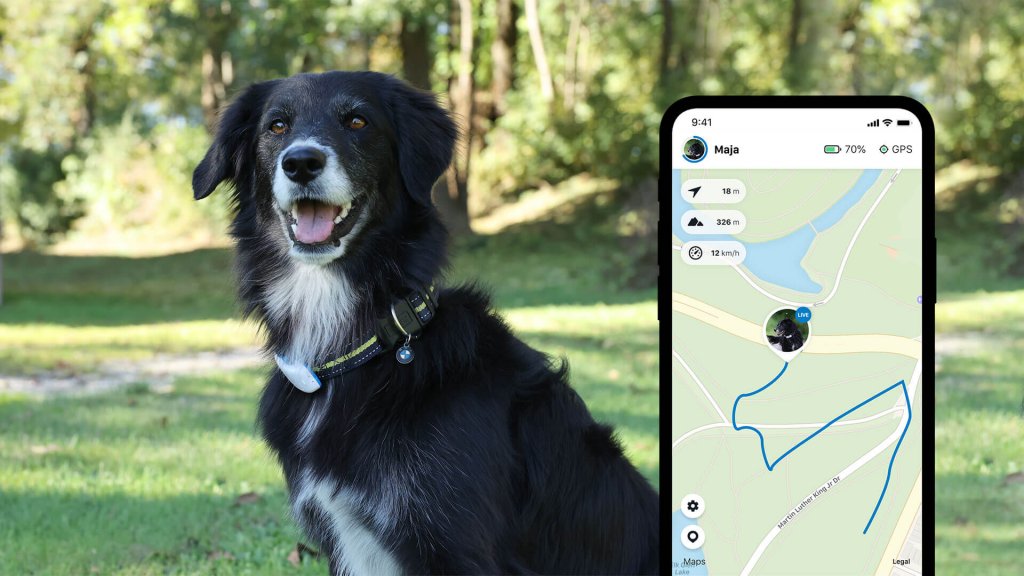
Everything You Need To Know About GPS Dog Fence
Do you worry about your dog running away or getting lost? Are you tired of traditional fences that block your view and require constant maintenance? If so, a GPS dog fence might be the perfect solution for you and your furry friend.
With a GPS dog fence, you can set boundaries for your dog and receive alerts if they stray too far. Plus, you can track their location in real-time, giving you peace of mind and ensuring their safety.
In this article, we’ll cover everything you need to know about GPS dog fences, including how they work, their benefits, and our top picks for the best GPS dog fences on the market.
Introducing the GPS Dog Fence
What is a GPS dog fence? A GPS Dog Fence is a type of pet containment system that works by using satellite technology to create a virtual boundary that keeps dogs within a designated area. Unlike traditional dog fences that physically surround a property using wood, metal, or wire barriers, GPS Dog Fences rely on radio signals that determine a dog’s location through a GPS tracker and receiver collar.
The GPS Dog Fence system is an effective solution for pet owners who want to keep their dogs within a specific area without having to install a physical fence boundary. It’s also ideal for homeowners who live in areas where physical fences are prohibited, or where the terrain makes fence installation difficult.
Using a GPS Dog Fence system is relatively easy. Pet owners simply install a transmitter that emits radio signals around a designated area. The dog receives a receiver collar that contains a GPS tracker that communicates with the transmitter. If the pet leaves the protected area, the collar sends a signal to the transmitter, which then sends a message to the owner’s device to alert them that their dog has gone outside the established boundary.
GPS Dog Fences also offer extra features like monitoring a dog’s activity levels and daily outdoor activities, providing the option for a pet tracker, and long-lasting battery life. It’s important to note that proper training is essential to the success of a GPS Dog Fence system, as some dogs may need guidance on respecting the invisible boundary.

Benefits of a GPS Dog Fence
Investing in a GPS Dog Fence can provide many benefits for both pet owners and their furry friends. In comparison to traditional physical fences, GPS technology offers a more flexible and customizable solution that eliminates the need for wires and fence posts. Here are some of the advantages of using a GPS dog fence:
Precise location tracking: A GPS Dog Fence uses satellite technology to provide accurate location tracking for the pet. It can track the dog’s movements in real-time, making it easy to monitor and correct wandering behavior without the need for physical boundaries.
Customizable boundaries: With a GPS dog fence, pet owners have more control over setting the boundaries for their pets. The system allows for customization, enabling the pet owner to set specific boundaries that suit their preferences and needs.
Remote location tracking: One of the most significant advantages of a GPS Dog Fence is that it can track the pet’s location remotely. This means that pet owners can monitor their dog’s whereabouts using a mobile device or computer, even when they are not physically present.
Outdoor activities: GPS Dog Fences also provide the option for peaceful coexistence of outdoor activities, such as hiking or camping. This is because the system can monitor the pet’s activity levels and daily outdoor activities, ensuring that the animal remains within the designated boundaries.
Monitored activity levels: Additionally, the GPS Dog Fence system can monitor the pet’s activity levels, providing insight into the dog’s health and overall wellness. The system can track the dog’s movements, ensuring that it gets sufficient exercise and activity levels. This can be beneficial for pet owners who have busy schedules and may not have the time to monitor their dog’s activity levels.
Types of GPS Dog Fences
GPS dog fences are becoming increasingly popular among dog owners who want to keep their pets safe and secure in their yards. These fences work by creating an invisible boundary around a designated area, and if the dog tries to leave the boundary, the GPS collar worn by the dog sends a signal to the pet parent’s smartphone alerting them to their pet’s location. There are different types of GPS dog fences available on the market, each with its own advantages and disadvantages. In this article, we will explore the different types of GPS dog fences that you can choose for your beloved pet.
1. Wireless GPS Dog Fence:
This type of fence is also known as a virtual fence and is easy to set up. It uses GPS tracking technology to create a defined boundary range around your property. You can control it through an app on your smartphone, and you also receive notifications if the pet steps out of the defined range. Without any need for wires, it’s an ideal solution for those with larger properties.
2. In-Ground GPS Dog Fence:
This type of fence requires burying the boundary wire underground. The dog’s GPS collar interacts with the buried wires, creating an invisible boundary. It’s a more permanent solution than a wireless fence and allows pet owners to create custom boundary shapes. The boundary is also not affected by potential obstructions like radio frequencies that affect wireless fences.
3. Hybrid GPS Dog Fence:
This type of fence combines the benefits of both wireless and in-ground fences. It has a separate transmitter that can be mounted to create a circular boundary range like a wireless fence, but it needs an underground wire for boundary stability like an in-ground fence.
4. Halo Collar:
Halo Collars work similarly to in-ground GPS dog fences. However, they do not need a separate device to be mounted. The collar creates the perimeter, and it’s easy to set up and use. Plus, it offers unique extra features like an activity tracker, daily alerts, and it keeps the pets safe when they’re enjoying outdoor activities like swimming.
Technology Behind a GPS Dog Fence
A GPS dog fence is a boundary system that consists of a GPS tracker and a wireless fence collar for dogs. The system uses satellite technology to create a virtual fence, rather than burying wires or building a physical fence. This fence boundary can be customized based on the activity levels and daily activities of the dog and avoid potential obstructions by adjusting the parameter. The GPS tracker communicates with cellular networks to provide accurate and real-time location tracking for the dog.
The receiver collar is equipped with a rechargeable battery that lasts longer than traditional fence collars, and the system may offer extra features, such as an activity tracker and subscription plans. Proper training is critical for the success of a GPS dog fence, and some firms offer a training program. In addition, GPS dog fences are safer than electric dog fences because they don’t use shock or static correction to discourage a dog from crossing the border.
Overall, GPS dog fences are a modern and innovative solution that allows a pet parent to monitor and protect their dog in real-time, without building a traditional fence or worrying about their pet’s safety. With a variety of features, benefits, and options available, GPS dog fences offer a smart pet containment solution for every dog parent.
How Much Is A GPS Dog Fence?
When it comes to GPS dog fences, the cost can vary depending on various factors. On average, GPS dog fences can range from $200 to $1000, depending on the type of fence, the number of collars required, and any extra features included in the system.
There are different types of GPS dog fences available in the market, and each type has a different price range. A traditional underground wire fence can cost anywhere from $200 to $400, whereas a wireless fence can cost between $300 to $500. For gps-based fences, prices range from $700 to $1000, depending on the technology used.
In some cases, GPS dog fences may also require a subscription plan for the collar to work correctly. The subscription plan can typically cost around $5 to $20 per month, depending on the brand.
However, it’s essential to note that a higher price doesn’t always guarantee a better quality GPS dog fence. There are several factors that affect the cost of a GPS dog fence system, such as the technology used, the range of the fence, and the brand.
If you’re on a tight budget, a traditional underground fence may be the best option. Still, if you want to invest in a GPS fence, it’s crucial to consider the features included in the system and the brand’s reputation before making the purchase.
Proper training is also crucial in making the investment worth it. Investing in a training program may add to the total cost of the GPS dog fence.
Conclusion
In conclusion, GPS dog fence systems are an excellent investment for pet owners who prioritize their furry friends’ safety and well-being. Although there are different types of GPS dog fences, including underground wire fences and wireless fences, the GPS-based fence is the most reliable and effective option. It provides pet owners with real-time location tracking, ensuring that their pets are always within the fence’s boundary, even when they’re not at home.




